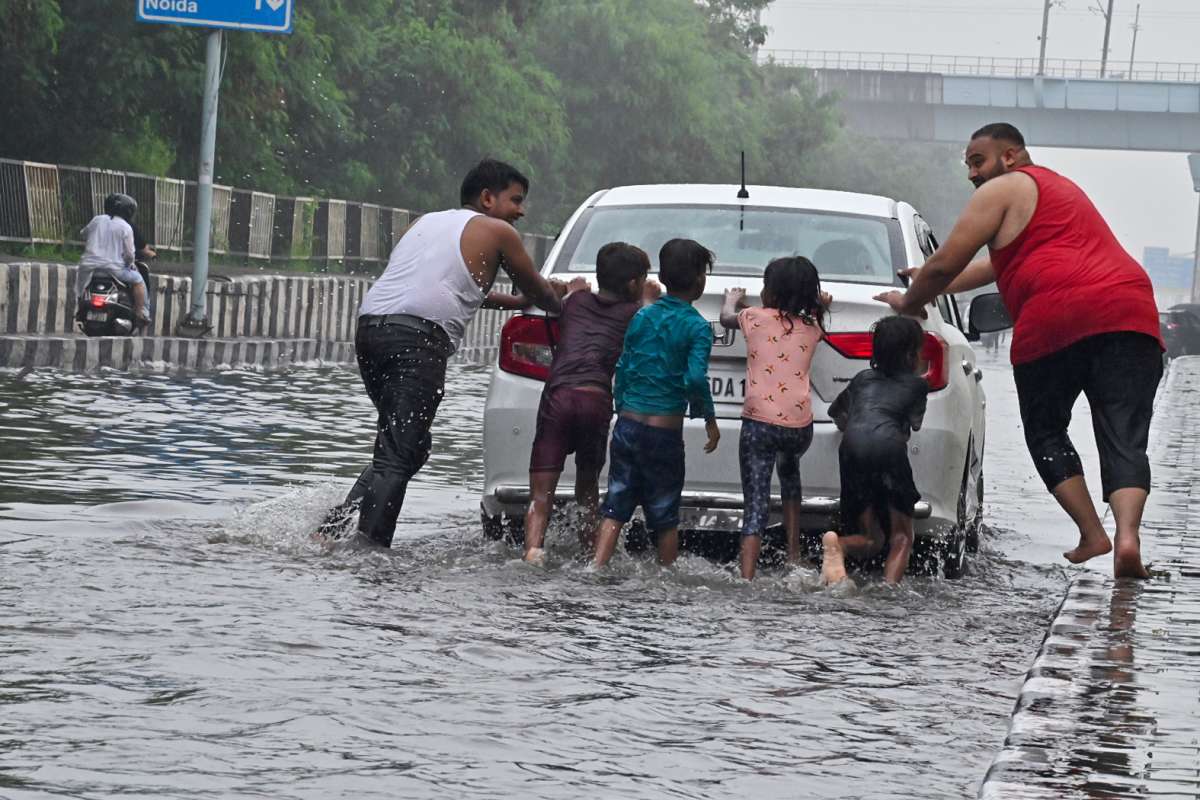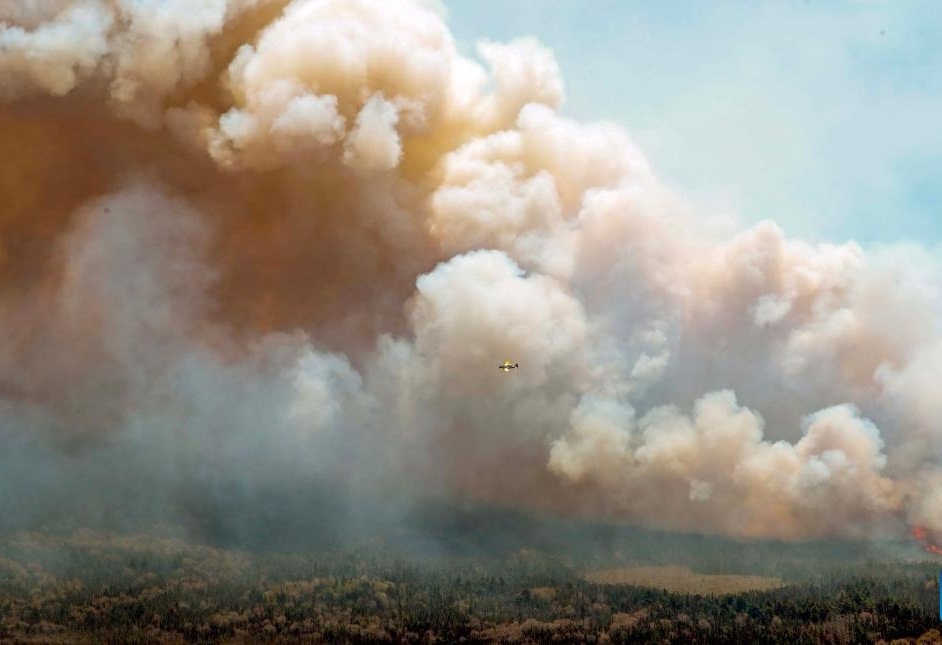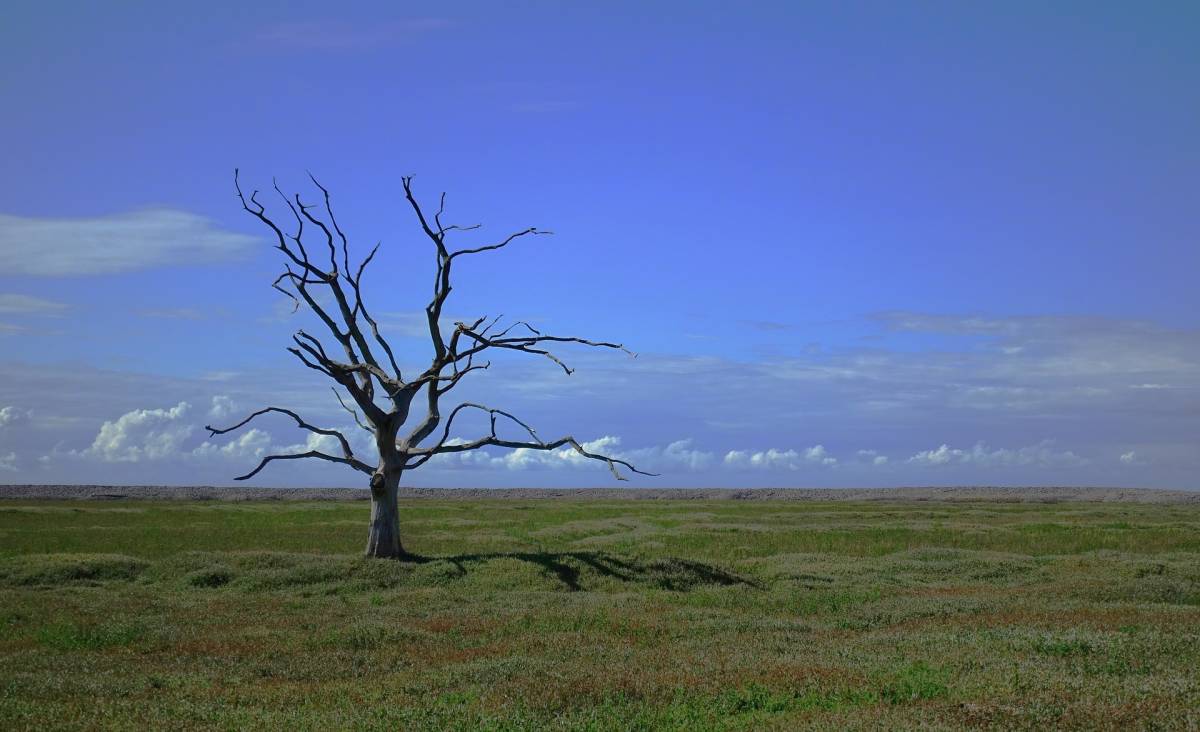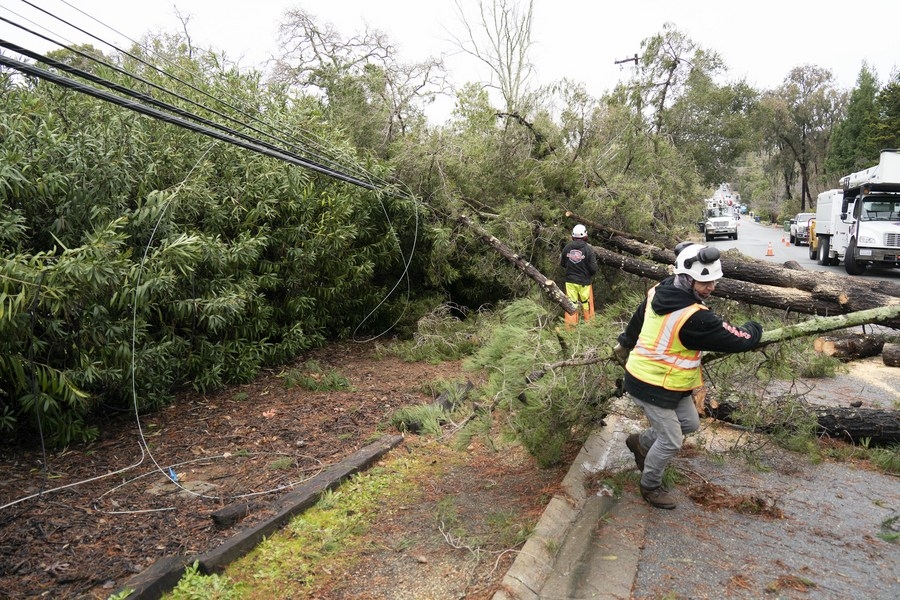As heavy rains in Himachal Pradesh continued to batter almost all districts, triggering landslides and flash floods in various regions, the Panchvaktra bridge in Mandi collapsed…reports Asian Lite News
Numerous states in India experienced an intense spell of monsoon rain, resulting in significant damage, loss of life, and property across the country.
In the northwestern Himalayan region, landslides blocked several roads, leaving people stranded. The rising water levels in the Beas River caused landslides and flash floods in various districts, leading to tragic loss of lives. In Himachal Pradesh, heavy rainfall continued to batter almost all districts, triggering landslides and flash floods.
As heavy rains in Himachal Pradesh continued to batter almost all districts, triggering landslides and flash floods in various regions, the Panchvaktra bridge in Mandi collapsed, officials said.
The Panchvaktra bridge in Mandi collapsed due to the increased water level in the river.
Additional District Magistrate, Mandi, Ashwani Kumar said that the historical bridge washed away as the river’s water level increased.
Earlier in the day, the bridges, connecting Aut village to Banjar, and of Pandoh village were swept away by the overflowing Beas river in Mandi district. Taking note of the incident, former state Chief Minister Jairam Thakur expressed concern as these bridges held significant historical significance for Himachal and said they were the “identity of Himachal”.
Earlier in the day, three persons of a family were killed while two others were injured after their house collapsed due to heavy rain in Himachal Pradesh’s Shimla on Sunday, the police said.
Officials said that the incident took place in Kotgarh village of Shimla on Sunday morning.
The victims were taken out of the debris after a rescue operation and rushed to a nearby hospital where doctors declared them brought dead.
All schools and colleges would remain closed in view of heavy rainfall in Himachal Pradesh on Monday and Tuesday, announced the state government on Sunday.
Earlier in the day, a portion of National Highway 3 has been washed away by the overflowing Beas River in Kullu, Himachal Pradesh.
Meanwhile, Losar village in the Lahaul and Spiti district of Himachal Pradesh experienced an unexpected spell of snowfall on Sunday, coinciding with heavy rainfall affecting various parts of North India. The entire village was blanketed in a thick layer of snow following this surprising snowfall in the morning.
Tragically, during the Shrikhand Mahadev Yatra in Himachal Pradesh, one pilgrim lost life, and two others went missing after falling from a hill near Parvati Bagh, officials said. The incident occurred while the pilgrims were undertaking the Yatra from Parvati Bagh.
As per information, the three pilgrims slipped while undertaking the Yatra from Parvati Bagh.
A shed, set up as langar (community kitchen) for Amarnath pilgrims, was washed away by the overflowing Chenab River in Jammu and Kashmir on Sunday.
Langar owners said that continuous heavy rainfall in various regions over the past few days raised the water level of the Chenab River, which washed away their makeshift, established for Amarnath pilgrims.
Indian Army on Sunday said the bodies of two soldiers, who went missing after they were swept away by rain-triggered flash floods, were recovered from the Poonch district of Jammu and Kashmir on Sunday.
The deceased jawans have been identified as Naib Subedar Kuldeep Singh and Lance Naik Telu Ram.
The Jammu-based White Knight Corps in a tweet confirmed their deaths.
Meanwhile, the Delhi Fire Service (DFS) officials on Sunday said two people got injured after a house collapsed in Delhi’s Zakhira area due to heavy rain.
Following heavy rain in the city on Saturday, as many as 15 houses collapsed and one person died, said a Delhi Fire Service official.
Earlier, a 58-year-old woman identified as Ranjit Kaur lost her life when a wall collapsed on her due to heavy rain in Tibbia College Society in Karol Bagh.
Meanwhile, due to heavy rainfall, the back side wall of Deshbandhu College, located in the Kalkaji area of Delhi, collapsed, resulting in the damage of approximately 15 luxury cars and 10 to 12 motorcycles and scooters.
The flood situation in the Dhemaji district of Assam has become grim as nearly 18,000 people have been affected by the current wave of flood. 48 villages under four revenue circles of the district have been inundated by flood waters and submerged 530.07 hectares of cropland.
Following torrential rain in the past couple of days, the water levels of several rivers and tributaries of the Brahmaputra River are rising, inundating new areas of the district.
As the flood waters have also entered the campus of Silapathar Model Hospital, patients, and hospital staff are bracing for a lot of difficulties.
The flood water of the Dikari River has submerged several villages including Jamuguri, Siyari, Uluwani, and Tatiguri and affected many villagers.
Nearly 30,000 people in six districts and one state sub-division have been affected by the current wave of flood and the flood waters submerged 1263.07 hectares of cropland.
An under-construction road in Kerala’s Wayanad district collapsed due to heavy rain and was washed away into a river nearby.
Heavy rains in the State have led to overflowing rivers and locals have alleged that concerned authorities did not construct a culvert or put pripes on the side of the road to drain the water causing the collapse of the Mananthavady-Walayar road that was nearing its completion.
In Uttarakhand, Badrinath National Highway was closed due to a landslide near Chhinka and NH-9 was closed in the Kumaon division at Champawat.
In the Tehri district, five out of 11 passengers were rescued after a vehicle rolled downhill in Gular in the district while a search operation for six other passengers was underway.
Due to continuous heavy rains, the water level of the Bhagirathi River has increased in Uttarkashi. In Joshiada, part of the wall got damaged due to river erosion.
“Instructions have been given to the government departments to be vigilant and people have also been asked to be careful,” the officials said.
The rains also led to waterlogging and traffic jams, roadblocks in hilly areas and several road stretches getting damaged.
Meanwhile, waterlogging was seen across Haridwar town, which is currently seeing a heavy rush of kanwariyas coming to fetch Ganga water.
Four people were reported dead in Dakshina Kannada till Friday due to rain-related incidents this monsoon, officials said.
Dakshina Kannada recorded 101.8 mm of rainfall on Friday, according to the District Disaster Management Authority.
A 46-year-old woman was killed when her house collapsed in a landslide in Nandavara village of Bantwal in the region on Friday morning, the authority said, adding that her 20-year-old daughter was rescued by locals.
Meanwhile, Union Home Minister Amit Shah held separate telephonic conversations with the Chief Ministers of Punjab and Himachal Pradesh on Sunday and took stock of the losses incurred in both states due to heavy rains. During the calls, the Home Minister assured them of all possible assistance from the central government.
Heavy rains lashed several parts of Punjab and Himachal Pradesh on Saturday as well as Sunday as the mercury dropped below normal limits in the two states.
Incessant overnight rain turned many low-lying areas in Punjab into a horror story, with severe waterlogging and traffic snarls.
Chandigarh, the capital of Punjab, witnessed rain throughout the day on Sunday. For the second consecutive day, rains lashed Fatehgarh Sahib, Mohali, Rupnagar and Patiala in Punjab.
In several places, water entered houses causing inconvenience to the people. A flood-like situation was seen in a private housing colony located in Punjab’s Dera Bassi, where boats and tractors were used to rescue locals stuck in their houses following the incessant rains.
In the wake of the continuous spell of heavy rain in north India, schools in Chandigarh have been closed for the next two days, officials said on Sunday.
Director of school education Harsuhinderpal Singh Brar said, “Whereas since Sunday morning Chandigarh has experienced heavy and continuous rainfall and there is a prediction for rainfall tomorrow as well. The significant rainfall and the weather forecast raise concerns regarding waterlogging and disruption in civic amenities in several areas of UT Chandigarh.” (ANI)
Flood warning as Delhi breaks 41-year rainfall record
The Delhi government issued a flood warning amid heavy rains in North India and the Haryana government released more than one lakh cusecs of water into the Yamuna River from the HathniKund Barrage in Yamunanagar.
Several parts of northwest India witnessed a heavy spell of rain with Delhi shattering a 41-year record. There were reports of house collapses, uprooting of trees and waterlogging in several residential colonies. Waterlogging issues were also observed in diplomatic enclaves such as Chanakyapuri, Kaka Nagar, Bharti Nagar, and other prominent roads and colonies under the jurisdiction of the NDMC. Meanwhile, The water level in the Yamuna river in Delhi is rising and is expected to breach the danger mark of 205.33 metres on Tuesday, the Central Water Commission (CWC) has said.
According to the CWC’s flood-monitoring portal, the water level in the Yamuna at the Old Railway Bridge stood at 203.18 metres at 1 pm on Sunday.
The warning level is 204.5 metres.The water level is likely to rise to 205.5 metres between 11 am and 1 pm on Tuesday, the CWC said in an advisory.
In a span of 24 hours, ending at 8:30 am on Sunday, Delhi recorded 153 mm of rainfall, marking the highest single-day rainfall in July since 1982, according to the India Meteorological Department (IMD).
According to India Meteorological Department, New Delhi’s Safdarjung recorded the third highest 24-hour rainfall (for the month of July) on 8th-09th July, 2023, since 1958.
The Safdarjung weather station, which is the city’s weather base recorded 153 mm of rain till 8.30 am, the IMD said in a tweet along with the details of the five highest rainfall records of 24-hour rainfall in the month of July for New Delhi (Safdarjung) during 1958-2023.
In 1958, Safdarjung Observatory had recorded 266.2 mm of rain during the July 20-21 period while in 1982, it logged 169.9 during the July 25-26 period, IMD said.
Following heavy rain in the city, Delhi Fire Service (DFS) officials said two people got injured after a house collapsed in Delhi’s Zakhira area due to heavy rain.
“The Delhi Fire Service (DFS) received the information about a house collapse at 9:34 am in the Zakhira locality of Delhi on July 9,” added the officials.
Amid the heavy rains in different parts of the country, India Meteorological Department (IMD) predicted that rainfall activity will continue over Northwest India, but the intensity of showers may differ. (ANI)












